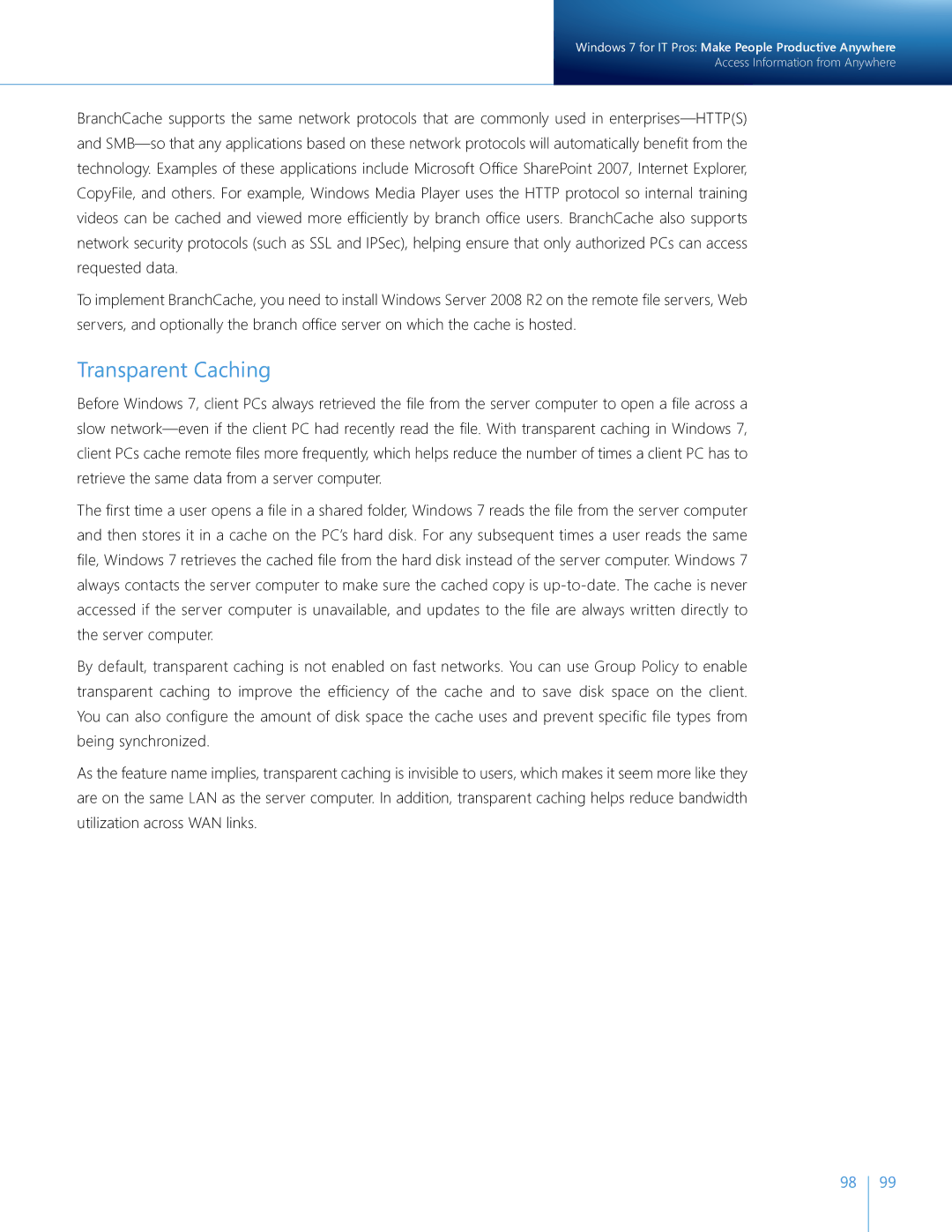
Windows 7 for IT Pros: Make People Productive Anywhere
Access Information from Anywhere
BranchCache supports the same network protocols that are commonly used in
To implement BranchCache, you need to install Windows Server 2008 R2 on the remote file servers, Web servers, and optionally the branch office server on which the cache is hosted.
Transparent Caching
Before Windows 7, client PCs always retrieved the file from the server computer to open a file across a slow
The first time a user opens a file in a shared folder, Windows 7 reads the file from the server computer and then stores it in a cache on the PC’s hard disk. For any subsequent times a user reads the same file, Windows 7 retrieves the cached file from the hard disk instead of the server computer. Windows 7 always contacts the server computer to make sure the cached copy is
By default, transparent caching is not enabled on fast networks. You can use Group Policy to enable transparent caching to improve the efficiency of the cache and to save disk space on the client. You can also configure the amount of disk space the cache uses and prevent specific file types from being synchronized.
As the feature name implies, transparent caching is invisible to users, which makes it seem more like they are on the same LAN as the server computer. In addition, transparent caching helps reduce bandwidth utilization across WAN links.
98 99
